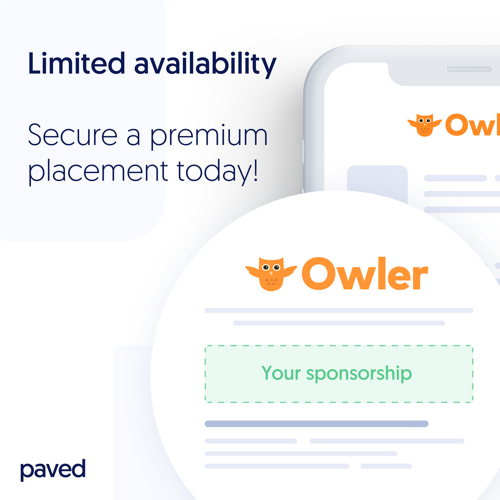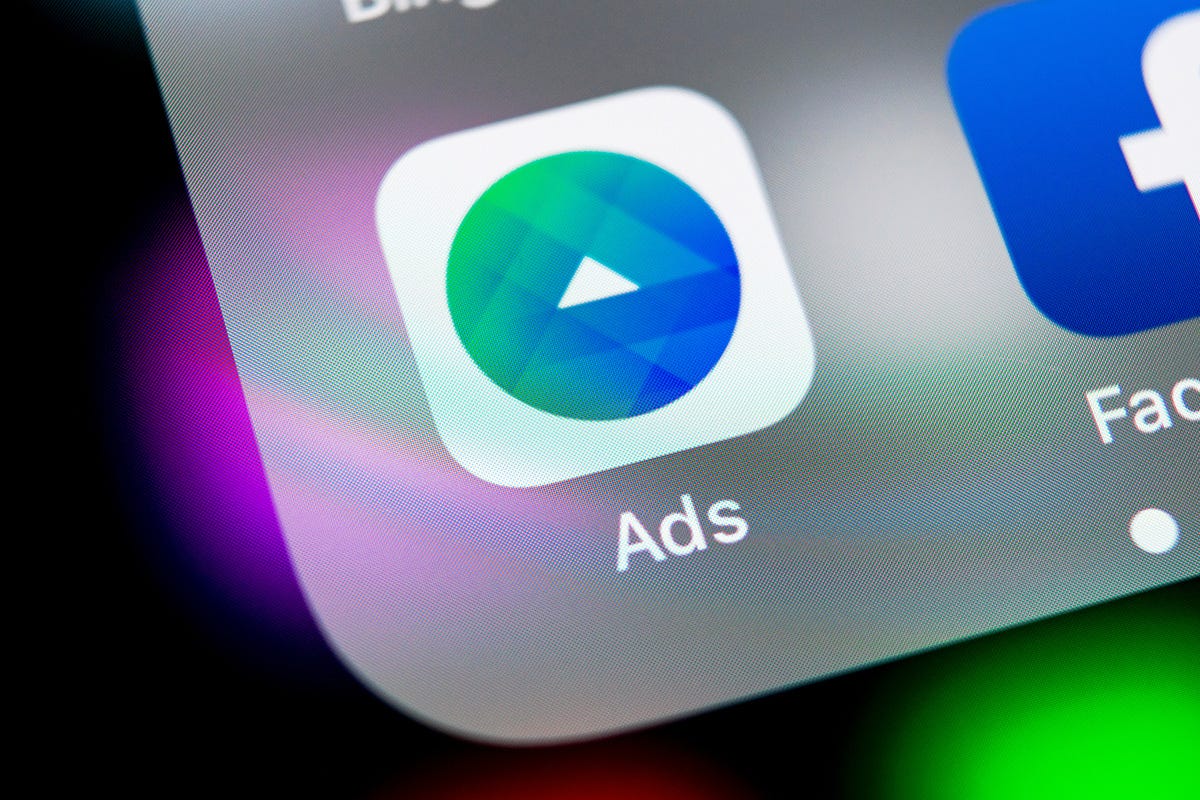Marketing BS: Apple, Facebook and the Future of Television
Good morning everyone,
In previous Marketing BS essays, I’ve written about both WeWork’s Adam Neumann and Theranos’s Elizabeth Holmes.
Now you can binge a pair of streaming shows about their respective falls from grace: The Dropout on Disney and WeCrashed on Apple TV+.
If we’re lucky, maybe we’ll eventually get a show about the behind-the-scenes bickering between Apple and Facebook (or maybe a documentary about the panic it’s caused for marketing departments).
—Edward
This Week’s Sponsor
Reach 1.5 Million Decision-Makers with Owler's Daily Newsletter
Get in front of Owler's community of 1.5M business leaders in Sales, Marketing, and Tech who rely on the Daily Snapshot to stay up-to-date with the latest trends and products. Book a sponsorship today!
Turning off tracking
For the last couple of years, Apple’s war with Facebook has been the highest-profile story in the marketing world. Apple has been turning the screws on Facebook, making it increasingly difficult for advertisers to accomplish two things:
Target users based on previous online behavior or demographics
Track the connection between an advertising impression and an action (a lead, a sale, an app download, etc.)
Anecdotally, many advertisers have reported dramatically higher costs of acquisition through Facebook.
Plus, the markets have responded: after Facebook’s earning call on February 2, the company’s stock dropped 26% — destroying $230 billion in value. (That’s the largest-ever single-day decrease in a public stock’s absolute value).
Facebook, of course, is not waving the white flag. While direct tracking is no longer possible, advertisers can still rely on statistical tracking techniques. Facebook has been investing in these tools over the last two years; a March 23 article in The Information detailed some positive results:
…ad industry analysts and consultants who work with marketers say Facebook has improved the tools it built to measure the effectiveness of ad campaigns in the wake of Apple’s restrictions... they aren’t sure what caused a recent boost in their ad performance and are studying the issue… The average cost per 1,000 views of one of his clients’ ads across Facebook fell to $9.75 in March from $18.03 in December…
The article continues to explain WHY performance has improved:
Facebook last year also launched a different tool to measure the performance of ad campaigns, which seems to be making a difference. The tool, called Aggregated Event Measurement, shows advertisers data on how their ad campaigns performed with groups of app users who opted out of Facebook tracking, without violating Apple’s rules. The data can include how often these groups of people installed or launched an app after seeing it advertised. Ad tech companies focused on measurement say more of their clients adopted the tool early this year, which meant they were beginning to see the benefits in the first quarter, though it is unlikely to ever match the precision of the prior tracking system… The Facebook tool has the potential to be more effective as advertisers send more customer data through it, but it’s not as good as the pixel system that preceded it…
The preliminary success of these tools provided some good news for Facebook; share prices have increased 15% since the February drop.
That said, Facebook’s delays in implementing those tools gave advertisers an opportunity to trial other channels:
…some advertisers remain cautious about Meta’s advertising machine and its apparent improvements. In the wake of widely publicized problems with Facebook ad campaigns last year, many businesses have shifted their ad spending to different apps, including TikTok, as well as to connected TVs, streaming apps and direct mail.
Change and complacency
When a channel — like Facebook’s paid social ads — is working effectively, marketers can get complacent. As long as the ROI remains high enough, they can boost their spend and then watch the channel generate greater (measurable) profit. This is the “easy” part of a marketer’s job: just slowly (or not so slowly) reinvest company profits into more marketing as the business scales.
But what happens when a large proven channel STOPS working (or even stops growing at the expected rate)? These situations force marketing teams to really prove their worth. Marketers should be prepared to pursue (or at least test) a different marketing channel — one that is still unproven. Without the agility to switch directions, a company can find themselves underwater very quickly.
In a common example, changes to unbranded SEO can devastate companies’ marketing strategies. On multiple occasions, I have seen what happens when a business with a high percentage of SEO-driven revenue gets hit with an algorithm change from Google. These companies were built on a cost structure that included a large amount of free traffic; when the algorithm changed, their revenue suddenly dried up. Even worse: because SEO was free (at least in any given period), the companies did not have a budget to reallocate toward other marketing channels. In turn, the companies were forced to cut costs quickly and sharply, often by restructuring themselves into a smaller business — a painful process for everyone involved.
Apple’s changes to Facebook tracking have also forced many companies to take quick actions. But in contrast to unbranded SEO-reliant companies that had no budget to redistribute, companies that experienced a dramatic drop in Facebook advertising ROI do have money that can be spent somewhere else. Those marketers face a different challenge: deciding WHERE to spend their budget.
Prior to Apple’s actions, the marketing team must have believed that Facebook was their highest ROI opportunity (if they didn’t, they would have been spending those dollars elsewhere). Now, they need to reallocate money to a channel they think (or HOPE) might perform as well as Facebook.
A well-prepared team — one that anticipates possible disruptions — can swiftly pivot from Facebook ads to some promising alternative channels. For course, most marketing teams are not that forward thinking. Radical change often incites panic in marketing departments — but in some cases, being forced out of complacency can be GOOD for a company.
On March 11, WDD published a profile of Natalie Mackey, the CEO and founder of Winky Lux, a Series-B cosmetics company. In the interview, Mackey describes how Apple’s tracking-blocking has impacted their marketing spend:
I think everybody is dealing with some level of change at post-iOS update. It’s a combination of iOS update, more competition in the market, larger companies moving into digital in general during the pandemic. However, during the iOS update, we really started to see issues around May. And then we hit what I would call kind of peak inefficiency with paid social in late summer, early fall. So, that was an increase in CPM, CPC and CPA. When we started to see CACs go up in paid social, which has been a big marketing engine for us, we wanted to shift into some other growth hacks, and we decided to try [television] commercials. The decision was based on the fact that we felt that our customers were watching more TV, because we were in the midst of a pandemic. We started running it, and we saw incredible lift both on dot-com and on our retail partners’ dot-com…A couple of things that we’ve seen have been linear TV performing better for us than, say, streaming which makes absolutely no sense to me, but it’s the truth.
Winky Lux’s traditional television campaigns outperformed their paid social advertising. They only discovered this fact when Facebook stopped working and they were FORCED to explore other options.
Like many CEOs, Mackey was “shocked” that TV outperformed social. But they shouldn’t be surprised — it’s easily explained by marketing fundamentals.
Advertising effectiveness is a function of three things:
Cost per impression
Quality of impression (creative, but also the quality possible in the given media)
Who sees the impressions (targeting)
2 x 3 = Impact per impression
2 x 3 / 1 = Impact per unit cost
In addition to the three factors listed above, there is another important idea to consider: how easily and quickly a channel’s impact can be measured and quantified. How can you verify whether or not your impression is high quality and if you are REALLY hitting the right people?
For years, Facebook ads were relatively cheap on a “cost per one thousand impressions” basis compared to traditional television ads. And while a 30- or 60-second TV spot is far higher fidelity than a static newsfeed-sponsored placement, marketers could never be sure how many television impressions were actually seen by the audience (and not skipped through with TiVo or missed by people taking a trip to the kitchen). Once Facebook developed good lookalike audience targeting, their ability to target potential buyers became relatively high.
Compared to television, Facebook had (1) lower CPM and (3) much better targeting. Throw in the fact Facebook’s ability to track and measure performance was, if not perfect, a lot better than the non-existent tracking of television, and you can understand why CEOs like Mackey thought that paid social was a better investment than stodgy old television.
Television may have better and (2) more immersive impression quality, but that advantage was not enough to overcome Facebook’s dominance in the other drivers of performance.
Recently, though, several things have changed:
Facebook CPMs have increased dramatically
Facebook’s ability to target has decreased dramatically
Facebook’s ability to track has decreased dramatically
Television’s ability to track has vastly improved (a subset of television)
Transition and television
Prior to 2015, the best way to target on Facebook was by creating small interest- and demographic-based groups, and then testing to see which group produced the greatest results. But starting around 2015 or 2016, there was a more effective strategy: using “lookalike audiences.” These audiences are built by supplying Facebook with the emails of your existing customers (or even just your best customers), and then having Facebook apply “machine learning” to find other users in their database that are similar to those customers — the users Facebook thinks are most likely to be interested in buying your product. In theory, the lookalikes could be built from any type of customer data (age, gender, Facebook interests, etc.). In practice, though, lookalikes were not as effective as interest-based targeting until Facebook was able to build the audiences using purchase data.
The best predictor of a customer’s likelihood to buy “object X” was by checking whether their other purchases resembled the purchases of other people who also bought object X. Unfortunately for companies relying on this lookalike strategy, Facebook’s ability to track those purchases has become far more constrained with Apple’s iOS changes. Today, many of my clients are realizing that Facebook’s “interest-based targeting” has become — just like it was before 2015 — the more effective way to target customers.
The CPM increases we are seeing at Facebook are also happening in television. This is particularly true for the highest quality TV — upfront prime time spots, the Oscars, and the Super Bowl have all seen significant increases in CPM. But lower-quality television — off-peak, not-guaranteed to run — is still available for very low CPMs. For a new brand like Winky Lux, low-volume television buys (before diminishing returns are hit) should be far more effective than pushing a saturated paid social channel a little further.
There is another notable trend in television you should monitor: the increasing availability of “connected television advertising (CTV).” With CTV, the ads are targeted at the user (or at least the user’s household) rather than appearing alongside a specific television show. If you are trying to reach women, rather than advertise on the Hallmark Channel, Oprah, or any show that skews more female, you can run ads that target “women users.” The ads won’t be perfect — if they run on a television in the living room, there is a chance a man will be the one watching. But still, these CTV ads will be far more targeted than traditional TV ads.
CTV ads have been possible for years now, but for most of that period they had very high CPMs. The high cost can be explained by the way that large-scale advertisers decide which media to buy.
Marketers at massive advertisers (like beer companies, car companies, and major CPG companies), are often directed to ensure their ads are “80/3” — meaning that 80% of their target audience should see the ad three times per purchase cycle. Traditionally, the best way to achieve that goal was buying (many) television ads. Roughly 80% of most target audiences watched television; as long as you made smart decisions, you could reliably hit your expected numbers.
About a decade ago that changed. There were enough cord-cutters that hitting 80/3 on traditional television alone was impossible for many brands. With some good planning, they might get to 70/3, but that last 10% was basically out of reach. Brand managers scrambled for other channels that could help them get in front of the remaining 10% of their audience three times. Digital television was an obvious option; a sizable percentage of the people watching digital TV were NOT watching traditional TV. (That demographic was the hardest to hit).
Companies faced a big problem: there was not a lot of digital television inventory to buy. When demand is high and supply is low, prices get bid up. If you were a performance marketer (or a marketer that cared more about performance than hitting an 80/3 target), it rarely made sense to buy digital TV ads — you could have far more impact buying traditional TV (or Facebook newsfeed).
But now, two things are making CTV look more attractive:
The major advertisers are becoming more performance minded. Even P&G, one of the most traditional (and largest) advertisers is pushing television stations to replace upfront purchases with real-time buying. This pressure is decreasing (irrational) demand for CTV spots.
More and more ad-supported video is becoming available. Netflix remains ad-free, but many of the new streaming services offer ad-sported tiers. Even Disney+ announced plans for a cheaper, ad-supported plan.
As supply increases and demand decreases, we are seeing more and more reasonably priced CTV ad slots become available. I have now seen a few clients buying CTV spots at CPMs roughly in line with traditional TV. And CTV has the added advantage of being far more targeted AND trackable.
Given that rising interesting in CTV has coincided with the declining performance of Facebook, we may see more and more brands trial television — and discover it works better than they dreamed possible. As that happens, demand will increase until we return to a more efficient landscape where CTV is more expensive than traditional TV for any given level of performance (because it is more measurable, and therefore less risky).
But in the short term, I expect there is an opportunity here for innovative companies — an opportunity that will be missed by marketing teams stuck in the weeds, trying to fix Facebook.
Keep it simple,
Edward
Edward Nevraumont is a Senior Advisor with Warburg Pincus. The former CMO of General Assembly and A Place for Mom, Edward previously worked at Expedia and McKinsey & Company. For more information, including details about his latest book, check out Marketing BS.






